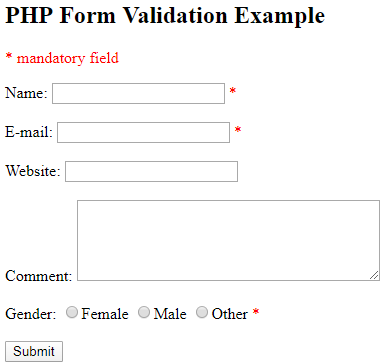

" method= "post"> Get FREE Updates Join us for FREE to get email updates! Name: " class= ""> Email: " class= ""> Subscribe Code language: HTML, XML ( xml ) In this case, show the form again with the error messages stored in the $errors array and entered values stored in the $inputs arrays. If the form has any errors, the $errors will not empty. Once you enter theįinally, load the code in the post.php to handle the form submission if the HTTP request method is POST. Third, show the form if the HTTP request method is GET by loading the get.php file. If an input element has invalid data, the index.php will show the entered value stored in the $inputs. Second, define the $errors array to store error messages and the $inputs array to store the entered form values. The form has the name and email input elements and a submit button:įirst, load code from both header.php and footer.php files using the require construct at the top and bottom of the file to generate the header and footer. We’ll build an email subscription form that includes a validation feature. To validate data in PHP, you can use the filter_var() and filter_input() functions. The server-side validation validates data in the web server using PHP.

However, client-side validation doesn’t prevent malicious users from submitting data that can potentially exploit the application.

The client-side validation aims to assist legitimate users in entering data in the valid format before submitting it to the server. To validate data at the client side, you can use HTML5 validation or JavaScript. The client-side validation is performed in the web browsers of the users. There are two types of validations: client-side & server-side: When processing a form, it’s critical to validate user inputs to ensure that the data is in a valid format. Summary: in this tutorial, you’ll learn about PHP form validation, how to validate form data, and how to show error messages if the user inputs are invalid.


 0 kommentar(er)
0 kommentar(er)
